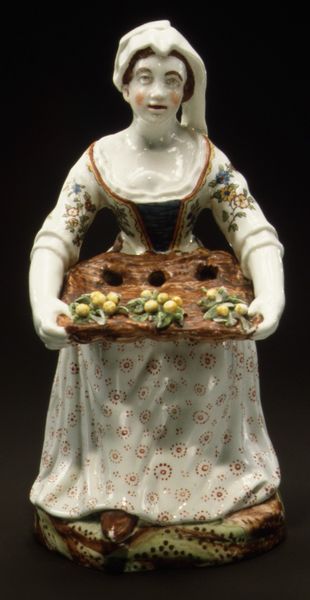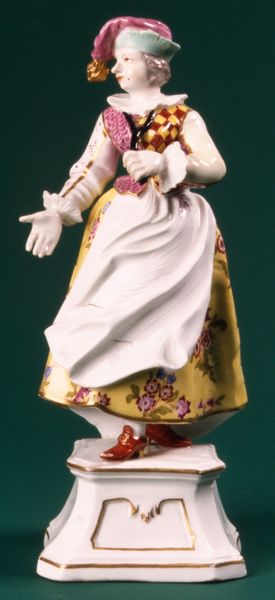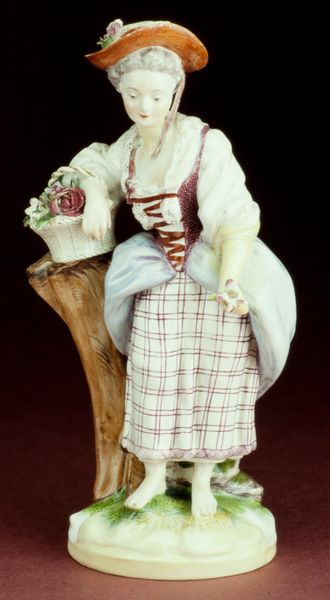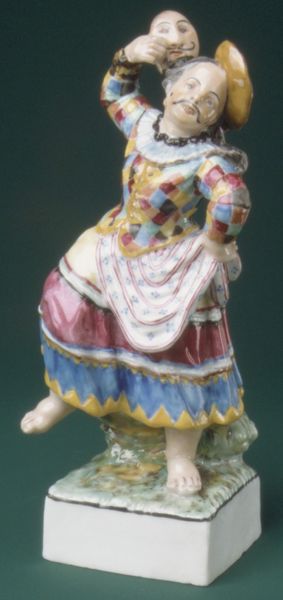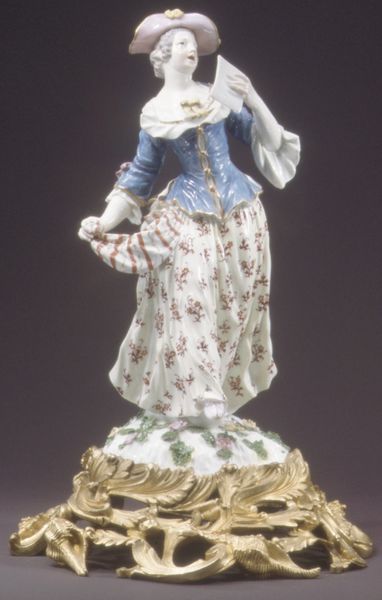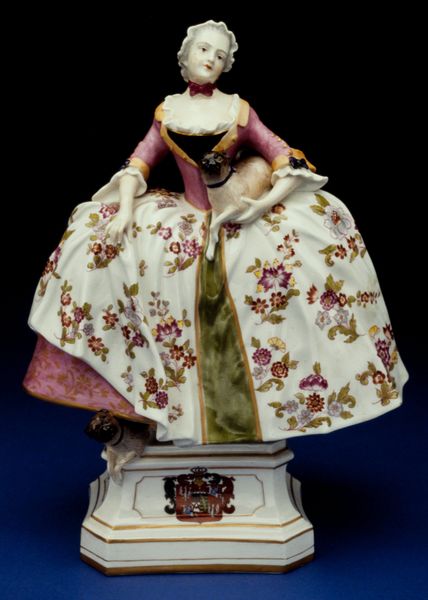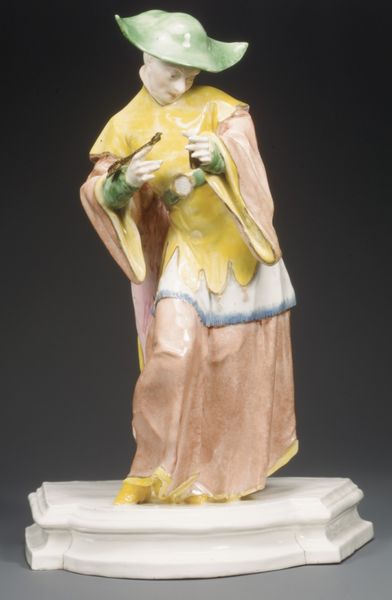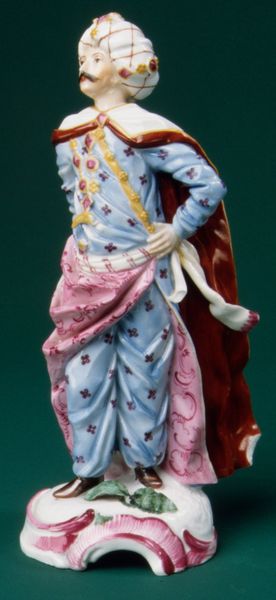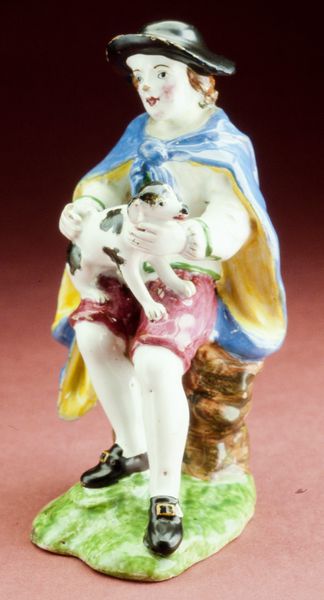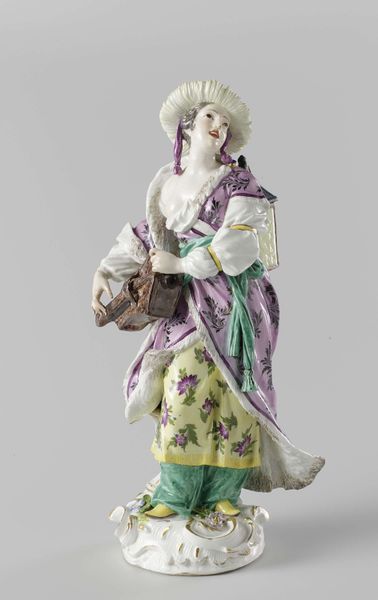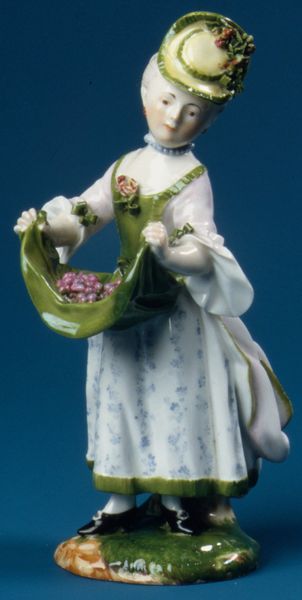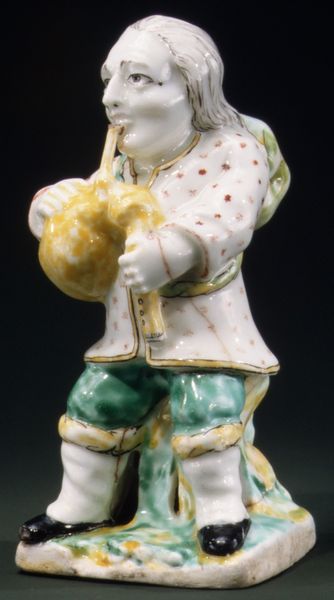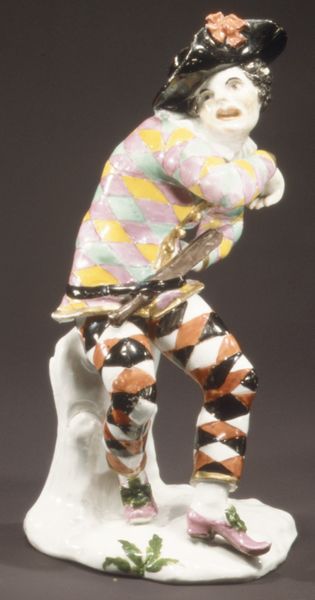
ceramic, porcelain, sculpture
#
portrait
#
sculpture
#
ceramic
#
porcelain
#
figuration
#
sculpture
#
decorative-art
#
miniature
#
rococo
Dimensions: Height: 7 1/2 in. (19.1 cm)
Copyright: Public Domain
Editor: This captivating sculpture, entitled "Lalage," was crafted from porcelain by Nymphenburg Porcelain Manufactory sometime between 1758 and 1772. Its diminutive size is quite charming, but there is an opaque complexity to the floral patterns and subtle textures. How might one interpret the cultural significance imbued in this delicate figure? Curator: This "Lalage" embodies the Rococo infatuation with theatricality and classical themes, but let’s consider how that translated to symbols of status and longing for a romanticized past. Her pose is so performative, almost coy, don’t you think? Editor: Absolutely! It’s as if she’s mid-curtsy on a stage, but the frozen ceramic makes it difficult to connect. Is she offering us something, or pushing us away? Curator: Precisely. Look closely at what she holds; a small offering, perhaps food for a bird, connecting her to ideals of nurturing and perhaps idealized, pastoral life. Porcelain, by its very nature, spoke of wealth, and access. What feelings do the florals and patterns of the gown conjure? Editor: They seem almost like a code. A repeated pattern with bursts of colorful flowers throughout, as if a garden is trapped within her dress, with each choice carrying deliberate weight, right? Curator: Yes! They speak to notions of cultivated nature, of controlled beauty. She isn't a real shepherdess, she embodies wealth mimicking this world, an artistic trope signaling wealth, and aspiration in 18th century Europe. Editor: That gives me a completely new understanding of what this tiny "Lalage" is really saying. It is remarkable to see how loaded even a delicate decorative object could be with meaning and aspirational representation. Curator: Indeed, objects such as these provide a powerful lens through which to consider class aspirations of a complex historical period.
Comments
No comments
Be the first to comment and join the conversation on the ultimate creative platform.
